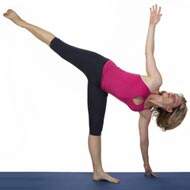Step-by-Step - Designing the Best Yoga Sequence for You
Different schools of yoga teach different exercises and routines that are aimed at restoring or challenging their students. Each of these schools of yoga have their own philosophy when it comes to how to start a yoga lesson and how to design the ideal sequence of yoga poses.
For example, the schools of Bikram yoga or Ashtanga yoga follow a set sequence of poses or asanas that never vary whereas other styles such as Vinyasa yoga are more adaptable, free flowing and change from class to class. Irrespective of what school you follow, if you are a beginner to yoga, it is important that you find a trained yoga instructor to guide your practice and prevent injury.
With thousands of yoga asanas and exercise combinations to choose from, it is natural to be confused about how to select a yoga asana sequence.
There are however some basic suggestions and steps that you can follow when practicing on your own. These include:
- You must start with a gentle warm up before moving on to the more challenging asanas or poses. An ideal warm up is the Sun Salutation or Surya Namaskar that works all the muscles and organs of the body.
- Preparatory movements or poses should follow the warm up. These poses should concentrate on loosening joints such as the ankles, wrists, and shoulders and to improve muscular control during the asanas that come next. Movements that open the groin and improve core strength can also be included at this point.
- There are then a number of asanas to choose from. Depending on your level of flexibility and strength, you can combine forward and backward bends, balancing poses, twisting poses, standing poses, and inverted asanas to work out the entire body. Keep in mind that there are a few poses that need to be followed up by counter poses. For example backbends are normally followed up with forward bends to help release the muscles of the lower back.
- Stretching asanas should be performed at the end of the sequence to help muscles realign and improve flexibility.
- Always begin and end your yoga routine with some deep breathing exercises. An ideal pranayama or deep breathing routine should include fast breathing exercises, hyperventilation and hypoventilation exercises. Different breathing exercises help increase or reduce the heat in the body and have to be performed either at the beginning or end of your yoga practice.
If you are unsure about how to design a pranayama or yoga asana sequence there are several yoga sites available online that can help tailor a routine to your skill level. Yoga books such as "Light on Yoga" by B.K.S. Iyengar also help with sequence ideas for all levels of students along with the benefits and detailed steps for each pose.
Read more articles from the Yoga Exercises Category.

 Find Pose
Find Pose

